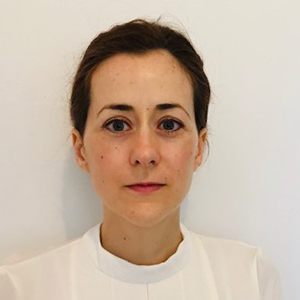Dušanka Vujanović

Position:Research associate
Academic Rank: Research associate in the field of natural/mathematical sciences-biology
Dr Dušanka Vujanović is a Research Associate at the BioSense Institute with a PhD in ecology in 2020 from Faculty of Sciences, University of Novi Sad. Her research focuses on plant ecology, invasive plants and ecological interactions (plant-herbivore, plant-soil and plant-insect interactions).
Center:
CBS
Themes:
1. Ecological interactions
2. Pollination
Projects:
1. Conservation strategy for protected and strictly protected hoverfly (Insecta: Diptera: Syrphidae) species in Serbia – Case study
2. Evaluation of ecological network for the purpose of more efficient nature protection in AP Vojvodina
3. Soil Health Guards – Cultivating Soil Connectivity: Empowering Farmers and Youth Community as Citizen Scientists to Monitor Soil Health and Biodiversity
Publications:
- Jovičić S, Burgio G, Diti I, Krašić D, Markov Z, Radenković S, Vujić A (2017) Influence of landscape structure and land use on Merodon and Cheilosia (Diptera: Syrphidae): contrasting responses of two genera. Journal of Insect Conservation. 21(1): 53–64, doi 10.1007/s10841-016-9951-1.
- Vujić А, Petanidou Т, Tscheulin Т, Cardoso P, Radenković S, Ståhls G, Baturan Ž, Mijatović G, Rojo S, Pérez-Bañón C, Devalez J, Andrić A, Jovičić S, Krašić D, Markov Z, Radišić D, Tataris G (2016) Biogeographical patterns of the genus Merodon Meigen, 1803 (Diptera: Syrphidae) in islands of the eastern Mediterranean and adjacent mainland. Insect Conservation and Diversity 9(3):181-191, doi: 10.1111/icad.12156.
- Krašić D, Groner E, Mészáros M, Nikolić T, Radišić D, Milić S, Kebert M, Milić D, Vujić A, Galić Z (2018) Riverine wood pasture responds to grazing decline. Ecological Research 33(1):213-223, doi: 10.1007/s11284-017-1540-6.
- Trifunov S, Krašić D, Markov Z, Mudri-Stojnić S, Butorac B, Vujić A (2013) Forest changes due to human activities in the National park “Fruška gora” (Serbia) – ecological and economic indicators. Archives of Biological Sciences 65 (2): 707-719, doi: 10.2298/ABS1302707T.
- Dick J, Al-Assaf A, Andrews C, Diaz-Delgado R, Groner E, Halada L, Izakovicova Z, Kertesz M, Khoury F, Krašić D, Krauze K, Matteuci G, Melecis V, Mirtl M, Orenstein DE, Preda E, Santos Reis M, Smith RI, Vadineanu A, Veselić S, Vihervaara P. (2014) Ecosystem services: a rapid assessment method tested at 35 sites of the LTER-Europe Network. Ekológia 33(3): 217-231, doi: 10.2478/eko-2014-002